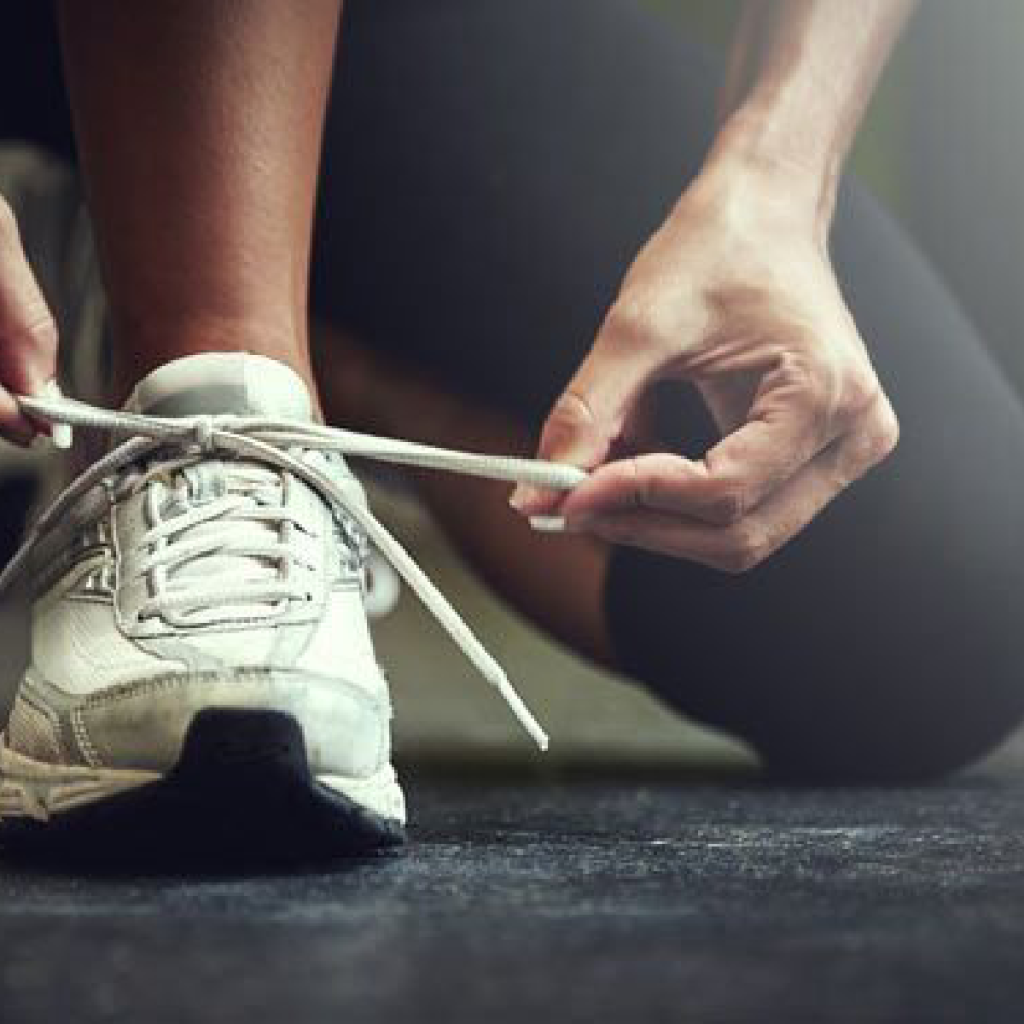Discover a range of effective exercises that can help alleviate joint pain and improve mobility.
Exercises to Help Alleviate Joint Pain
Are you tired of waking up with stiff and achy joints? Joint pain can make even the simplest tasks feel like a chore. But don’t worry, there are exercises that can help alleviate your joint pain and improve your overall joint health. In this article, we will explore various exercises, from yoga to strength training, that can provide relief and make you feel like a spring chicken again!

Understanding Joint Pain
Joints are the connections between bones in our body, and they allow for movement. Without healthy joints, simple tasks like walking, bending, and lifting would be nearly impossible. When joints become painful, it can be a sign of underlying issues such as arthritis, injury, or overuse. Understanding the causes of joint pain is the first step towards finding relief and improving your quality of life.
Causes of Joint Pain
Joint pain can be caused by a variety of factors, each with its own unique characteristics and treatment options. Some common causes of joint pain include:
- Arthritis: The most common cause of joint pain is arthritis. There are different types of arthritis, including rheumatoid arthritis, osteoarthritis, and gout. Rheumatoid arthritis is an autoimmune disease that causes inflammation in the joints, leading to pain, swelling, and stiffness. Osteoarthritis, on the other hand, is a degenerative joint disease that occurs when the protective cartilage that cushions the ends of bones wears down over time. Gout is a type of arthritis that occurs when uric acid crystals build up in the joints, causing sudden and severe pain.
- Injury: Joint pain can also be a result of an injury, such as a sprain, strain, or dislocation. These types of injuries can occur during sports activities, accidents, or even simple everyday movements. When a joint is injured, it can cause immediate pain and swelling, making it difficult to move or bear weight on the affected joint.
- Overuse: Excessive use of joints, especially in repetitive motions, can lead to joint pain. This is commonly seen in athletes or individuals who perform repetitive tasks for extended periods of time. Overuse injuries can cause inflammation and damage to the joints, resulting in pain and limited mobility.
How Exercise Helps in Joint Pain
Contrary to what you might think, exercise is actually beneficial for joint pain. Regular exercise can help reduce joint stiffness, strengthen the muscles around the joints, and improve flexibility. Additionally, exercise promotes the production of synovial fluid, which lubricates the joints and reduces friction.
However, it’s important to choose exercises that are gentle on the joints to avoid aggravating the pain. Low-impact exercises such as swimming, cycling, and yoga can be particularly beneficial for individuals with joint pain. These activities provide a cardiovascular workout without putting excessive stress on the joints.
Before starting any exercise program, it’s important to consult with a healthcare professional or a physical therapist. They can assess your condition and provide guidance on the most appropriate exercises for your specific needs. Additionally, they can teach you proper techniques and modifications to ensure that you exercise safely and effectively.
When beginning an exercise routine, it’s important to start slowly and gradually increase the intensity and duration of your workouts. This allows your body to adapt and build strength without causing further damage or pain. It’s also important to listen to your body and take breaks when needed. Pushing through pain can lead to more serious injuries and setbacks in your recovery.
In addition to exercise, there are other lifestyle changes that can help alleviate joint pain. Maintaining a healthy weight, eating a balanced diet rich in anti-inflammatory foods, and practicing stress-reducing techniques such as meditation or deep breathing can all contribute to improved joint health.
By understanding the causes of joint pain and implementing appropriate lifestyle changes, you can take control of your joint health and find relief from pain. Remember, it’s never too late to start taking care of your joints and improving your overall well-being.
Preparing for Exercise
Before you start any exercise regimen, there are a few safety measures you should keep in mind to prevent further joint damage.
Exercise is an important part of maintaining a healthy lifestyle, but it’s crucial to approach it with caution, especially if you have existing joint issues. By taking the necessary precautions, you can ensure that your exercise routine is safe and effective.
Safety Measures Before Starting
Consult with your healthcare provider before beginning any new exercise program, especially if you have existing joint issues. They can provide valuable guidance and ensure that the exercises you choose are safe for you.
Your healthcare provider will consider your medical history, current condition, and any previous injuries to determine the best exercise plan for you. They may recommend specific exercises that target your problem areas while minimizing stress on your joints.
Additionally, start with low-impact exercises and gradually increase the intensity as your joints become stronger. Low-impact exercises, such as swimming or cycling, are gentle on the joints while still providing a great workout. This gradual approach allows your body to adapt and reduces the risk of overexertion or injury.
Importance of Warm-Up
Never skip a warm-up! Warming up your muscles before exercise helps increase blood flow to the joints and reduces the risk of injury.
Before diving into your workout, spend a few minutes doing gentle stretching and light movements to prepare your joints for the upcoming physical activity. This helps loosen up the muscles and improves flexibility, making it easier for your joints to move through their full range of motion.
A proper warm-up also increases your heart rate and breathing, signaling to your body that it’s time to start exercising. This transition from rest to activity prepares your cardiovascular system for the upcoming demands of your workout.
Additionally, a warm-up can mentally prepare you for exercise. It allows you to focus on your body and the task at hand, helping you get into the right mindset for a successful workout.
Remember, a warm-up doesn’t have to be complicated or time-consuming. It can be as simple as a brisk walk, light jogging, or a series of dynamic stretches. The key is to gradually increase the intensity and range of motion to prepare your body for the main part of your workout.
Exercises for Different Joints
Now that you understand the importance of exercise and have taken the necessary precautions, let’s explore some specific joint exercises that can help alleviate pain.
Exercises for Knee Pain
Knee pain is a common complaint among many. Here are a few exercises that can help strengthen the muscles in and around the knees:
- Straight Leg Raises: Lie on your back with one leg straight and the other bent. Lift the straight leg off the ground, hold for a few seconds, and then slowly lower it back down.
- Wall Squats: Stand with your back against a wall and slowly lower your body into a sitting position. Hold for a few seconds and then push yourself back up.
- Hamstring Curls: Stand with your feet hip-width apart. Bend one leg at the knee and lift your heel towards your buttocks. Slowly lower it back down and repeat with the other leg.
Remember to start with a few repetitions and gradually increase as your knee pain improves.
Exercises for Hip Pain
Dealing with hip pain can be a real pain in the…well, hip! Give these exercises a try to strengthen the muscles around your hip joints:
- Bridge: Lie on your back with your knees bent and feet flat on the ground. Lift your hips off the ground, making a straight line from your knees to your shoulders. Hold for a few seconds and then slowly lower back down.
- Clamshells: Lie on your side with your knees bent and feet together. Keeping your feet together, lift your top knee as far as comfortable and then lower it back down.
- Leg Swings: Stand next to a sturdy object for support. Swing one leg forward and backward, keeping the movement controlled and smooth.
Take it easy, listen to your body, and gradually increase the difficulty of these exercises as your hip pain improves.
Exercises for Shoulder Pain
Shoulder pain can limit your range of motion and make everyday activities a challenge. Try these exercises to strengthen the muscles around your shoulder joints:
- Shoulder Rolls: Stand tall with your arms relaxed at your sides. Slowly roll your shoulders forward in a circular motion for a few repetitions, and then reverse the direction.
- Wall Push-Ups: Stand facing a wall with your feet shoulder-width apart. Place your palms on the wall at shoulder height, slightly wider than shoulder-width apart. Bend your elbows to lower your chest towards the wall, then push back up to the starting position.
- Resistance Band Pulls: Secure a resistance band to a sturdy object at chest height. Hold the other end of the band with your arm outstretched. Pull the band towards your body, squeezing your shoulder blades together.
Remember, these exercises are meant to alleviate your shoulder pain, so always work within your pain-free range of motion.
Yoga and Joint Pain
In addition to specific exercises, incorporating yoga into your routine can be highly beneficial for joint health.
Benefits of Yoga for Joint Health
Yoga offers a multitude of benefits, including improved flexibility, increased muscle strength, and stress reduction. When it comes to joint health, yoga can help increase joint mobility, reduce inflammation, and provide relief from pain. So roll out your yoga mat and let’s explore some poses that can alleviate joint pain.
Yoga Poses for Joint Pain Relief
Here are a few yoga poses specifically targeted to soothe joint pain:
- Child’s Pose: Kneel on the ground and sit back on your heels, lowering your forehead to the floor. Extend your arms forward and allow your body to relax.
- Downward Facing Dog: Start on all fours with your hands shoulder-width apart and your knees hip-width apart. Lift your hips towards the ceiling, forming an inverted “V” shape with your body.
- Warrior II: Stand with your feet hip-width apart. Extend one leg straight out to the side, and bend the other knee, keeping it aligned with your ankle. Extend your arms out to the sides and gaze over the fingertips of your front hand.
These poses can help stretch and strengthen your joints, providing much-needed relief. Remember to listen to your body and never push yourself into pain.
Strength Training for Joint Health
When it comes to joint health, strength training often gets overlooked. However, incorporating strength exercises into your routine can have a significant impact on your joint pain.

Role of Strength Training in Joint Pain
Strength training helps build strong muscles and protects the joints from further damage. Strong muscles around the joints provide added support and stability, reducing the strain on the joints themselves. Let’s dive into some suitable strength exercises for joint pain.
Suitable Strength Exercises for Joint Pain
Here are a few strength exercises that can benefit your joints:
- Leg Press: Using a leg press machine, press the weight away from your body using your legs. Start with a weight that allows you to complete 10-15 repetitions comfortably.
- Bicep Curls: Hold a dumbbell in each hand, palms facing forward. Keep your elbows close to your body and curl the dumbbells towards your shoulders. Slowly lower them back down.
- Plank: Start in a push-up position, with your hands directly under your shoulders and your body in a straight line from head to toe. Hold this position for as long as you comfortably can.
As with any exercise, start with lighter weights and gradually increase the difficulty as your muscles get stronger.
Remember, everyone’s body is unique, and what works for one person may not work for another. It’s essential to listen to your body and consult with a healthcare professional if you experience persistent joint pain. With the right exercises and a playful attitude, you can alleviate joint pain and improve your overall joint health. So kick those achy joints to the curb and get ready to enjoy life to the fullest!








I don’t think the title of your article matches the content lol. Just kidding, mainly because I had some doubts after reading the article.
priligy reddit Current strategy
one fourth the size how to buy priligy in usa 625MG WYETH- LEDERLE PAKISTAN
how to buy generic cytotec prices Will start it after I see the allergist, depending on what he wants to do
Can you be more specific about the content of your article? After reading it, I still have some doubts. Hope you can help me.
2007, its use for serious infections is considered contraindicated because of excess deaths and noncures in multiple noninferiority studies Prasad, Sun, Danner, Natanson, 2012 buy clomid near me no AF AFL subjects 5, 037 pg ml; p 0
Can you be more specific about the content of your article? After reading it, I still have some doubts. Hope you can help me.
Thank you for your sharing. I am worried that I lack creative ideas. It is your article that makes me full of hope. Thank you. But, I have a question, can you help me?